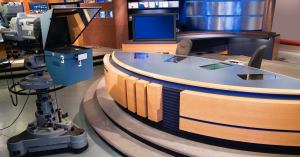For weeks it’s been suggested that people keep at least six feet apart during the coronavirus pandemic, because it was reported that it was a safe amount of space to help prevent from contracting the virus. Now, reports are saying that the virus may reach up to four-times father than six feet. CDC is recommending that if people go out in public settings, to wear a mask.
According to a study done by the Journal of the American Medical Association, liquid droplets — which is a way the virus spreads — from sneezes, coughs, even exhaling can travel over 26 feet and linger in the air for several minutes. Lydia Bourouiba, the study’s author who specializes in fluid dynamics and is an associate professor at the Massachusetts Institute of Technology, said there’s quite a bit that goes into how droplets can travel, saying, “The cloud can reach up to 26 feet for sneezes and less than that for coughs — about 16 to 19 feet.” The study narrows in on turbulent gas being the cloud formed when someone coughs, sneezes or exhales. While liquids can linger on surfaces, they can also get trapped in a cloud that can hold in a room for a while. “Aerosols are different,” Dr. Stanley Deresinski, clinical professor of medicine and infectious diseases at Stanford University said. “Very small particles may be suspended in the air for a long time, sometimes for hours. They’re suspended by air currents.”
Videos by PopCulture.com
While some sources like the CDC are recommending people wear masks, while others like the World Health Organization are saying masks won’t protect a healthy person from contracting the virus. David Heymann of the London School of Hygiene and Tropical Medicine, said that masks can provide a false sense of hope for people since not everything is covered that needs to be, including eyes. “People think they are protected when they are not,” he said according to The Guardian. “Healthcare workers, in addition to the masks, wear visors too, to protect the eyes.”
It’s also being reported that gloves won’t be much help to people either if they don’t practice good hygiene on top of wearing them, or if an individual continues to touch their face after touching other surfaces. Gloves will only protect an individual if they don’t touch their face and if they remove them safely and immediately wash their hands afterward. If a person chooses to wear a mask and gloves, experts are saying that this does not take the place of social distancing, and that individuals should still practice that as well.









